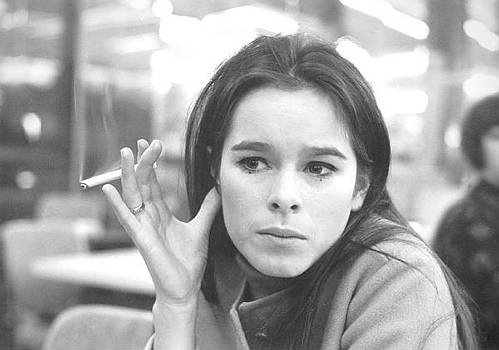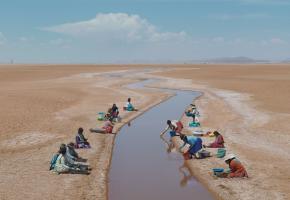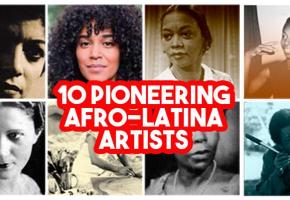Born in Santa Monica, California in 1944, Geraldine Chaplin is the fourth child of Charlie Chaplin, and the eldest of the eight children he would have with his fourth and last wife, Oona O’Neil. Of the many Chaplin children, she is, however, the only one to have followed her father into acting and quite accidentally so.
An aspiring ballerina, Geraldine Chaplin left the world of dance after realising that she would never become the great ballerina that she was expected to become as the daughter of an infinitely talented, worldwide star. In a 1964 interview with Oriana Fallaci, Geraldine explains the pressures that accompanied her famous surname: “I realised that I’d never be a great ballerina and so I might as well give up right away, and try something else. Because you see, it’s not enough to be a good ballerina: you have to be a great ballerina, and this wasn’t the case for me. …The outcome would have been that I’d have been a disappointment to myself and to my father too”.
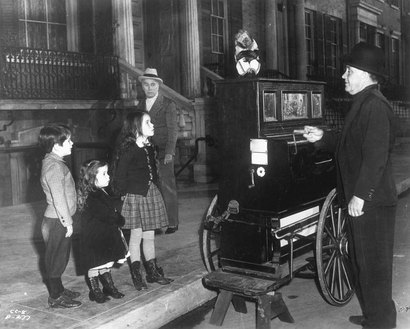
Despite her lack of talent, the corps de ballet often exploited her name to draw in audiences to productions in which she participated and whom she felt she subsequently disappointed with her performances “that lasted a minute or less”. Unwilling to settle for mediocrity, Chaplin came to believe that if anyone were to exploit her name, then it would be she herself, a fact that she has unabashedly admitted time and time again.
An out of work ballerina and unwilling to return to her parent’s home, acting came to Chaplin as a quick and easy way to make money: “I thought: I can cash in on the name and get a job as an actress, that’s got to be easy”. Yet it was once she started acting, that Geraldine Chaplin acquired a passion for film.
With her dad's little black book at her disposal, her first film was under the direction of no other than David Lean, as Tonya in Dr Zhivago. Filmed in Spain, it was here that Chaplin's long afffair with the country would begin. Her encounter with the Spanish Film director Carlos Saura catapulted her into a professional and romantic relationship that would span twelve years and seven films. Chaplin’s best works were arguably born out of this collaboration and it is not surprising that she has been adopted as a great figure of Spanish cinema, working more recently with the likes of Almodovár (Hable con Ella) and Juan Antonio Bayona (El Orfeonato).
And so, an actress with apparently all the tools become a Hollywood starlet: talented, unconventionally beautiful and, above all, with an established and successful name, chose to become a fundamental part of a politically driven cinematic movement in Francoist Spain to which she had ironically fled to escape her father’s discipline and to earn the legacy of his fame that had opened so many doors to her. The collaboration with Saura marked the end of the American “super productions” that had gotten her noticed, and the beginning of what she has called her initiation into independent cinema, or marginal cinema as it was called at the time.
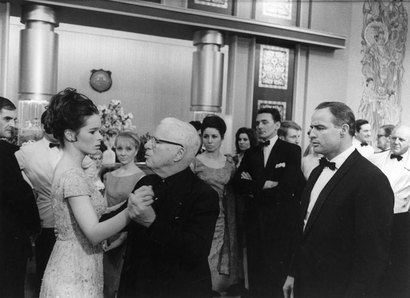
In spain, there is a clear notion that Chaplin was making the kinds of films that she enjoyed watching herself. And that it opened a new world to her in which she could breath. She joked once, "In Spain I hear so much noise from my window that can't stand it. In Switzerland it's the lack of noise that drives me crazy," implying that she felt comfortable living amidst another country's 'noise', rather than having hollywood's spotlight on her. Her career was inextricably linked to Carlos Saura and his films of the 60’s and 70’s. Indeed, she did not reappear in the Spanish cinema scene until 1999 when she appeared in Xavier Villaverde’s Finisterre: Donde termina el Mundo. In an attempt to explain this gap in her career in Spain, Chaplin suggests that this was not coincidental.
Similarly significant, is the fact that Chaplin’s working and personal relationship with Saura ended in 1979 as Spain entered into a new era. Saura’s films were a reaction against Franco’s regime and with his death came the end of the opposition movement with which Chaplin had been so closely associated with. Chaplin, with her melancholic face and enigmatic air merged readily with Saura’s cryptic and often mysterious films of the 1960’s and 70’s, matching the mood perfectly. This was no longer appropriate for the uncertain but yet optimistic air that followed Franco’s death, and Saura's film post- Franco film Cría cuervos which would go on to win the Grand Jury Prize at the Cannes Film Festival and become Saura’s most internationally lauded film.
By some sense of irony, the 1976 Cría Cuervos… quite possibly epitomises Chaplin’s retreat into the shadows of Spanish cinema as she plays the dual role of the adult Ana (who appears only three times in the film, and from the future) and of Ana’s dead mother (who appears in the memories conjured by the child Ana). She never appears in the present, coincidentally coinciding with Chaplin’s 1979-1999 break with Spanish cinema. Throughout the film, Chaplin is a shadow of the past, an image of a neglected Spain that was uncared for and ignored (very much in the same way that she would come to feel ignored by Spanish cinema after 1979), whilst the essence of the film itself is in actual fact an exploration of a new Spain emerging from the shadow of dictatorship and trauma and with an open and unwritten future.
In the Fallaci interview Chaplin had admitted to being afraid of her father and, more specifically, of his shadow. She recognised that it would only be by letting go of this fear that she would be able to step out of his shadow and “do something by myself”. Her collaboration with Saura in particular, allowed her to do just that. It could well be argued that her role in Cria Cuervos.... is one of Chaplin’s finest. In it, in fact, Chaplin is thepresence: she presides over the film as a spirit, and the film is unthinkable without her. Perhaps it is ironic that a film which saw Chaplin playing a two dimensional, shadow-like figure, saw her finest performance and step out from behind her fathers shadow and make the name Chaplin her own. Geraldine Chaplin had left her mark on Spanish cinema in her own right.

With reference to Saura, Chaplin speaks of “una época maravillosa”, “Carlos me abrió las puertas al cine…independiente”. However, in very much the same way that Saura’s films effectively paved the way for Chaplin to become an emblem of Spanish cinema, Chaplin’s contribution to Saura’s films is undeniable. In a 1976 interview Saura admitted this, saying: “Geraldine is very important in all my films because in a certain way she helps me just with her presence”. It is most certainly her presence in Cria Cuervos... in particular that encompasses the sense of enigma and uncertainty that characterises the film.
Geraldine Chaplin has undoubtedly overcome her fear and stepped out of her father’s shadow, contributing not only to Spanish cinema, but to world cinema. The Geraldine Chaplin we know today has come a long way from the girl who in 1964 claimed to have “done a fat nothing, except be Charlie Chaplin’s daughter”.
The Spanish Film Festival, supported by The Cervantes Institute, begins on Friday


